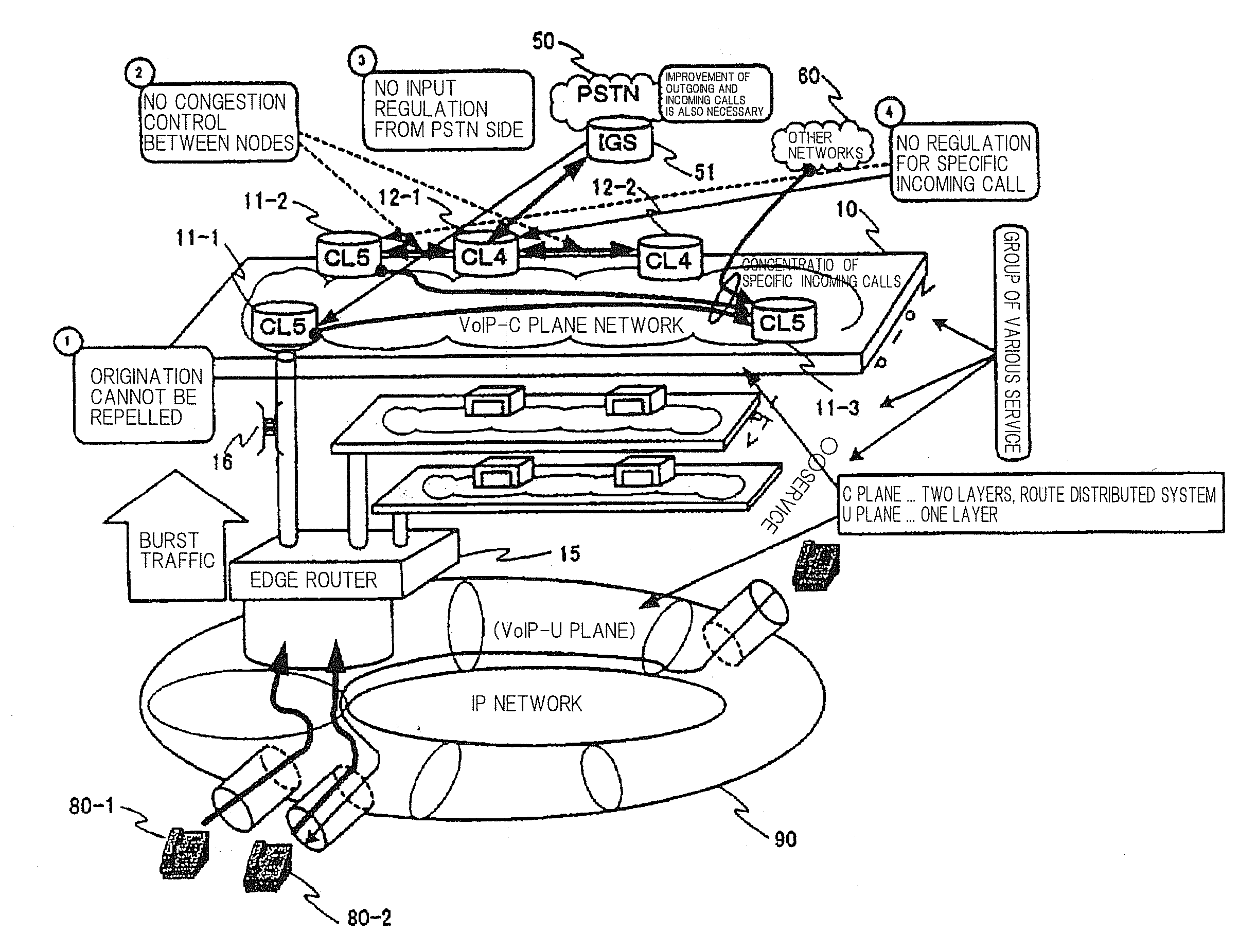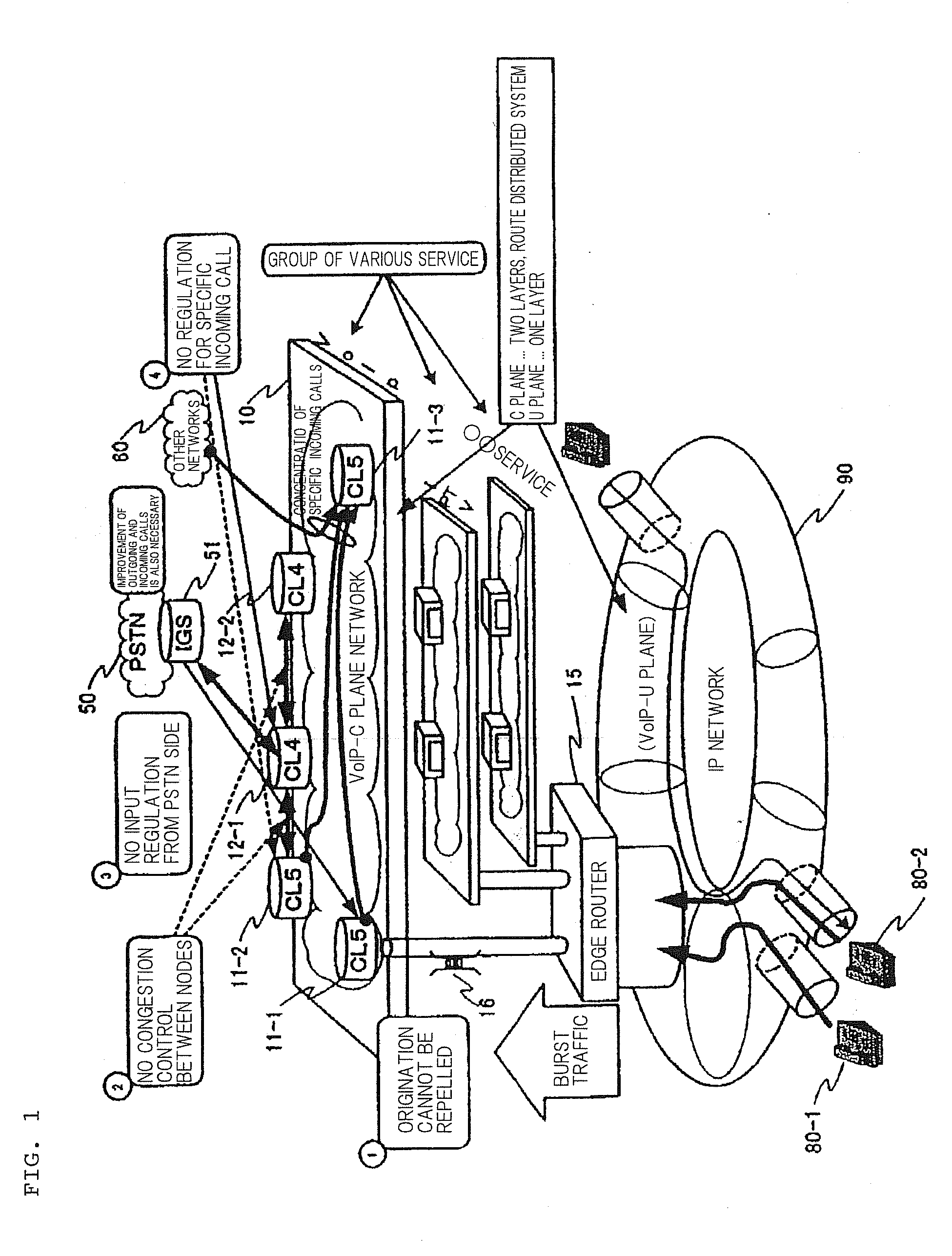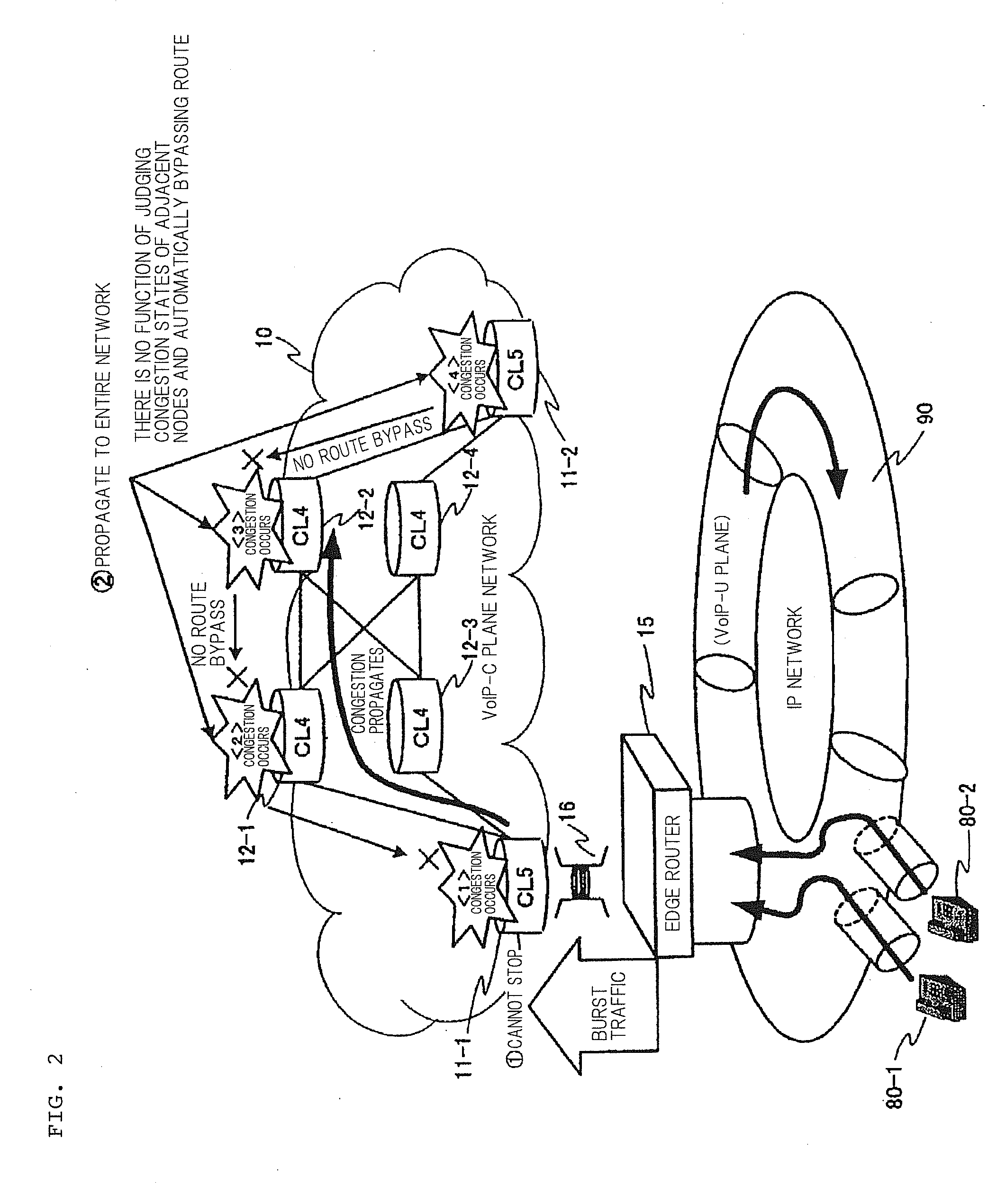Congestion control system, congestion control method, congestion control program, and program recording medium
a congestion control and program technology, applied in the field of congestion control system, congestion control method, congestion control program, and program recording medium, can solve the problems of soft switch itself stoppage, telephone communication function stoppage, etc., to prevent the occurrence of congestion in respective nodes and eliminate the effect of congestion
- Summary
- Abstract
- Description
- Claims
- Application Information
AI Technical Summary
Benefits of technology
Problems solved by technology
Method used
Image
Examples
first embodiment
[0090]In the embodiment described above, an example of an operation for regulating transmission of a control message to subscriber accommodation node CL511 of the originating system that has fallen into a light congestion state or a heavy congestion state is explained with reference to FIG. 4.
[0091]FIG. 4 is a diagram for explaining operations in a first embodiment of congestion control system 100 according to the present invention. Specifically, FIG. 4 is a diagram for explaining an example of an operation for regulating, when it is detected that subscriber accommodation node CL511 is in a congestion sign state or has fallen into a congestion state, registration of a control message for call setting request concerning a new outgoing call among control messages to be registered in reception queue 16 of subscriber accommodation node CL511 from edge router 15 and suppressing a new originating call of user terminal 80.
[0092]In the VoIP network in the past, as described above, the mecha...
second embodiment
[0104]An example of an operation for bypassing a route of a control message to relay node CL412 that has fallen into a light congestion state or a heavy congestion state is explained with reference to FIG. 5.
[0105]FIG. 5 is a diagram for explaining an operation of a second embodiment of congestion control system 100 according to the present invention. In FIG. 5, for example, when it is detected that relay node CL412-1 shown in FIG. 3 is in a congestion sign state or has fallen in a congestion state, an operation for suppressing further generation of a load on relay node CL412-1 by bypassing a control message to relay node CL412-1 to another relay node CL412-2 is performed. This operation is explained with a case in which an SIP (Session Initiation Protocol) is adopted as a protocol for call control of a VoIP network as an example.
[0106]In the VoIP network in the past, a control message for processing request is fixedly routed and transmitted to a node in a specific route decided in ...
third embodiment
[0114]An example of an operation for regulating input of a control message from PSTN network 50 connected to relay node CL412 that has fallen into a light congestion state or a heavy congestion state is explained with reference to FIG. 4.
[0115]FIGS. 6A and 6B are diagrams for explaining operations in a third embodiment of congestion control system 100 according to the present invention. Specifically, FIGS. 6A and 6B are diagrams for explaining an operation for regulating, when it is detected that relay node CL412 to which PSTN network 50 is connected is in a congestion sign state or has fallen into a congestion state, a control message from PSTN network 50 relay node CL412 with a case in which an SIP (Session Initiation Protocol) is adopted as a protocol for call control for a VoIP network as an example.
[0116]In the VoIP network in the past, usually, when PSTN network 50 and VoIP network 10 are connected, as shown in FIG. 6A, STP (Signal Transfer Point) 52 on PSTN network 50 side an...
PUM
 Login to View More
Login to View More Abstract
Description
Claims
Application Information
 Login to View More
Login to View More - R&D
- Intellectual Property
- Life Sciences
- Materials
- Tech Scout
- Unparalleled Data Quality
- Higher Quality Content
- 60% Fewer Hallucinations
Browse by: Latest US Patents, China's latest patents, Technical Efficacy Thesaurus, Application Domain, Technology Topic, Popular Technical Reports.
© 2025 PatSnap. All rights reserved.Legal|Privacy policy|Modern Slavery Act Transparency Statement|Sitemap|About US| Contact US: help@patsnap.com



